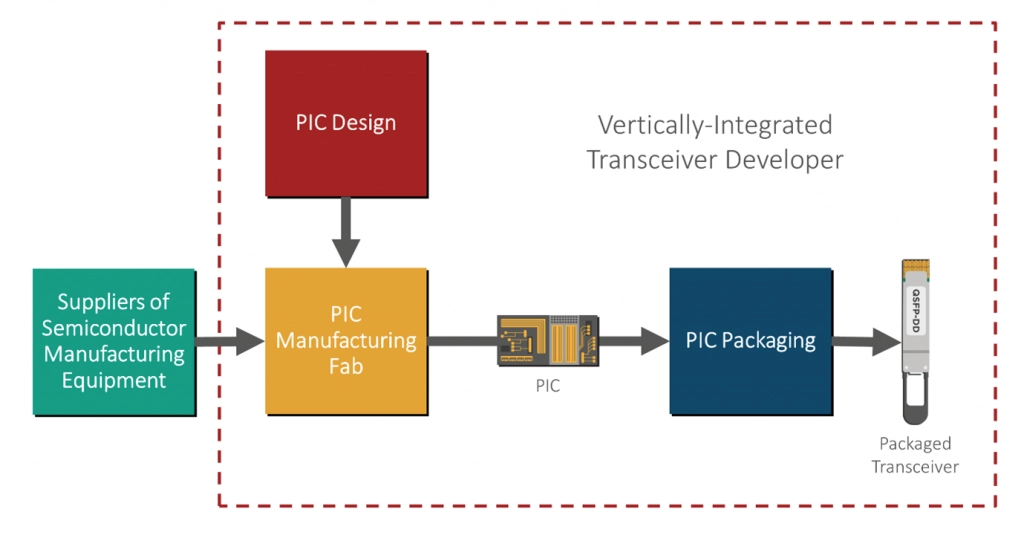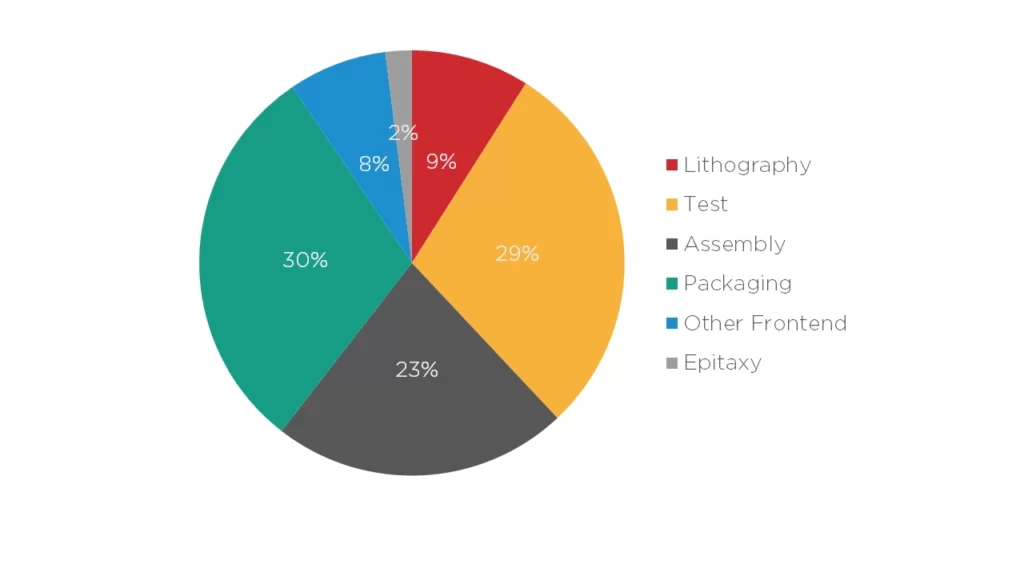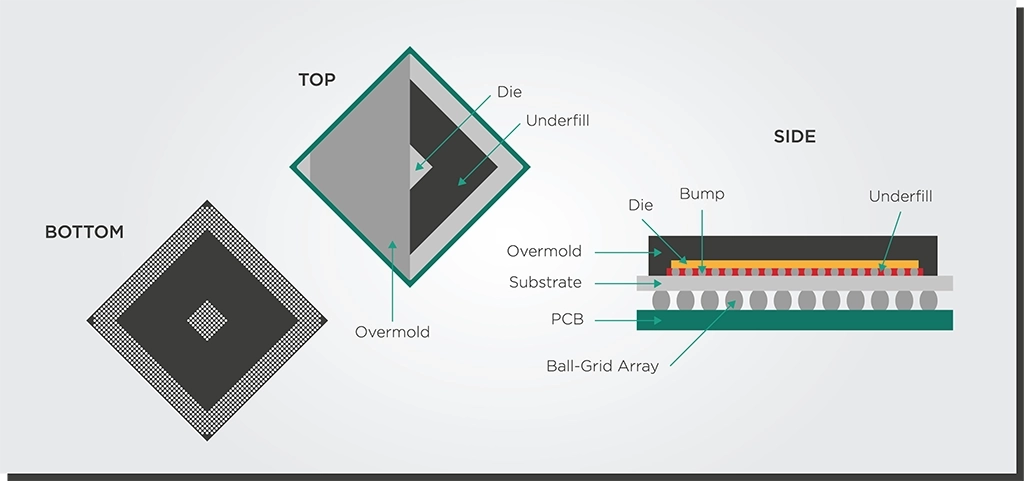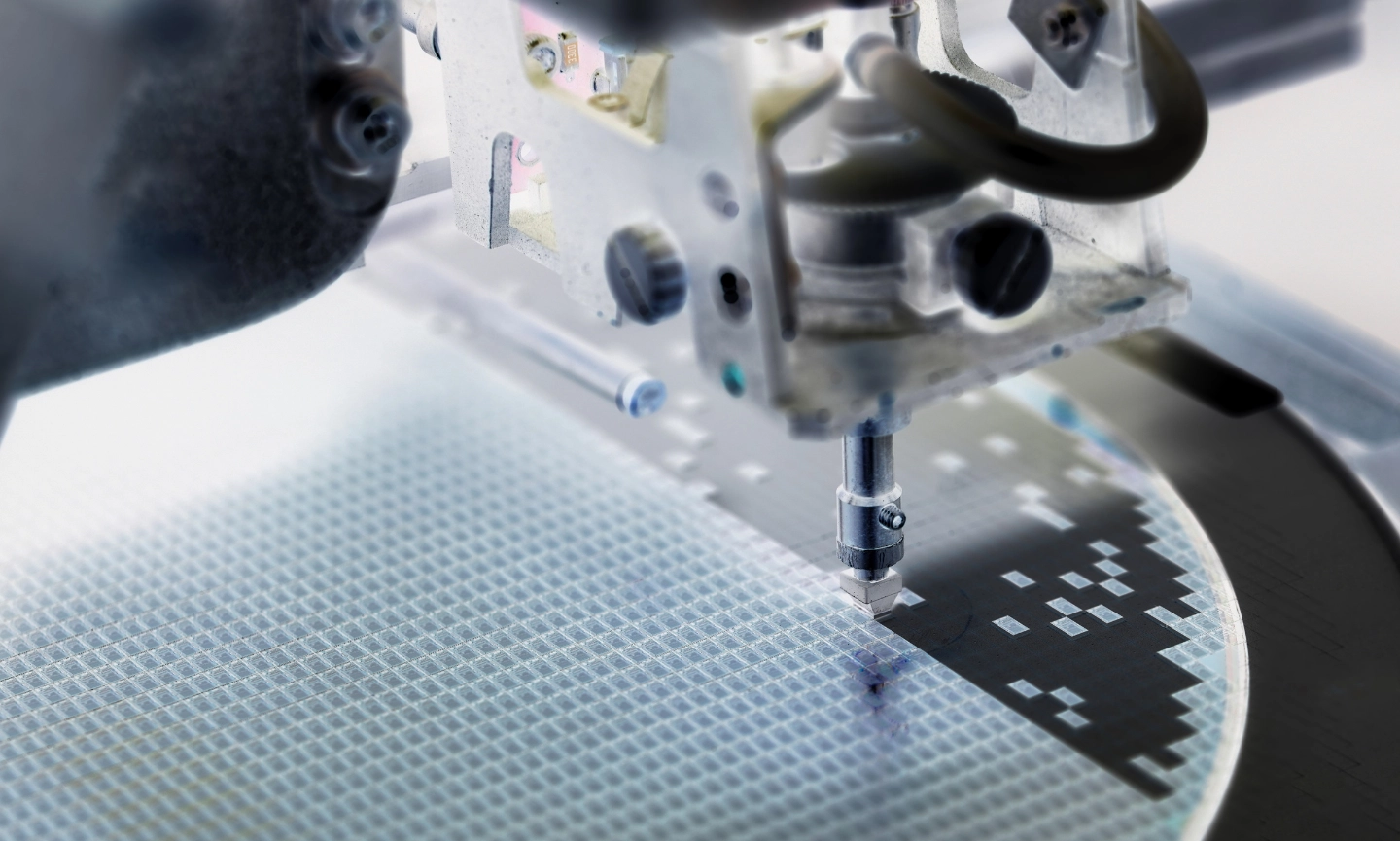Leveraging Electronic Ecosystems in Photonics
(First published on the 2nd November 2022 updated 4th September 2024)
Thanks to wafer-scale technology, electronics have driven down the cost per transistor for many decades. This allowed the world to enjoy chips that every generation became smaller and provided exponentially more computing power for the same amount of money. This scale-up process is how everyone now has a computer processor in their pocket that is millions of times more powerful than the most advanced computers of the 1960s that landed men on the moon.
This progress in electronics integration is a key factor that brought down the size and cost of coherent transceivers, packing more bits than ever into smaller areas. However, photonics has struggled to keep up with electronics, with the photonic components dominating the cost of transceivers. If the transceiver cost curve does not continue to decrease, it will be challenging to achieve the goal of making them more accessible across the entire optical network.
To trigger a revolution in the use of photonics worldwide, it needs to be as easy to use as electronics. In the words of our Chief Technology Officer, Tim Koene-Ong:
“We need to buy photonics products from a catalog as we do with electronics, have datasheets that work consistently, be able to solder it to a board and integrate it easily with the rest of the product design flow.”
Tim Koene-Ong, Chief Technology Officer.
This goal requires photonics manufacturing to leverage existing electronics manufacturing processes and ecosystems. Photonics must embrace fabless models, chips that can survive soldering steps, and electronic packaging and assembly methods.
The Advantages of a Fabless Model
Increasing the volume of photonics manufacturing is a big challenge. Some photonic chip developers manufacture their chips in-house within their fabrication facilities. This approach has substantial advantages, giving component manufacturers complete control over their production process.

However, this approach has its trade-offs when scaling up. If a vertically integrated chip developer wants to scale up in volume, they must make a hefty capital expenditure (CAPEX) in more equipment and personnel. They must develop new fabrication processes as well as develop and train personnel. Fabs are not only expensive to build but to operate. Unless they can be kept at nearly full utilization, operating expenses (OPEX) also drain the facility owners’ finances.
Especially in the case of an optical transceiver market that is not as big as that of consumer electronics, it’s hard not to wonder whether that initial investment is cost-effective. For example, LightCounting research data estimates that 173 million optical Ethernet transceivers were sold in 2023, while the International Data Corporation estimates that 1.17 billion smartphones were sold in 2023. The latter figure is seven times larger than the entire optical transceiver market.
Electronics manufacturing experienced a similar problem during their 70s and 80s boom, with smaller chip start-ups facing almost insurmountable barriers to market entry because of the massive CAPEX required. Furthermore, the large-scale electronics manufacturing foundries had excess production capacity that drained their OPEX. The large-scale foundries sold that excess capacity to the smaller chip developers, who became fabless. In this scenario, everyone ended up winning. The foundries serviced multiple companies and could run their facilities at total capacity, while the fabless companies could outsource manufacturing and reduce their expenditures.
This fabless model, with companies designing and selling the chips but outsourcing the manufacturing, should also be the way for photonics. Instead of going through a more costly, time-consuming process, the troubles of scaling up for photonics developers are outsourced and (from the perspective of the fabless company) become as simple as putting a purchase order in place. Furthermore, the fabless model allows photonics developers to concentrate their R&D resources on the end market. This is the simplest way forward if photonics moves into million-scale volumes.
Adopting Electronics-Style Packaging
While packaging, assembly, and testing are only a small part of the cost of electronic systems, the reverse happens with photonic integrated circuits (PICs). Researchers at the Technical University of Eindhoven (TU/e) estimate that for most Indium Phosphide (InP) photonics devices, the cost of packaging, assembly, and testing can reach around 80% of the total module cost.

To become more accessible and affordable, the photonics manufacturing chain must become more automated and standardized. The lack of automation makes manufacturing slower and prevents data collection that can be used for process control, optimization, and standardization.
One of the best ways to reach these automation and standardization goals is to learn from electronics packaging, assembly, and testing methods that are already well-known and standardized. After all, building a special production line is much more expensive than modifying an existing production flow.
There are several ways in which photonics packaging, assembly, and testing can be made more affordable and accessible. Below are a few examples:
- Passive alignments: Connecting optical fiber to PICs is one of optical devices’ most complicated packaging and assembly problems. The best alignments are usually achieved via active alignment processes in which feedback from the PIC is used to align the fiber better. Passive alignment processes do not use such feedback. They cannot achieve the best possible alignment but are much more affordable.
- BGA-style packaging: Ball-grid array packaging has grown popular among electronics manufacturers. It places the chip connections under the chip package, allowing more efficient use of space in circuit boards, a smaller package size, and better soldering.

- Flip-chip bonding: A process where solder bumps are deposited on the chip in the final fabrication step. The chip is flipped over and aligned with a circuit board for easier soldering.

These might be novel technologies for photonics developers who have started implementing them in the last five or ten years. However, the electronics industry embraced these technologies 20 or 30 years ago. Making these techniques more widespread will make a massive difference in photonics’ ability to scale up and become as available as electronics.
Making Photonics Chips That Can Survive Soldering
Soldering remains another tricky step for photonics assembly and packaging. Photonics device developers usually custom order a PIC, then wire and die bond to the electronics. However, some elements in the PIC cannot handle soldering temperatures, making it difficult to solder into an electronics board. Developers often must glue the chip onto the board with a non-standard process that needs additional verification for reliability.
This goes back to the issue of process standardization. Current PICs often use different materials and processes from electronics, such as optical fiber connections and metals for chip interconnects, that cannot survive a standard soldering process.
Adopting BGA-style packaging and flip-chip bonding techniques will make it easier for PICs to survive this soldering process. There is ongoing research and development worldwide, including at EFFECT Photonics, to make fiber coupling and other PIC aspects compatible with these electronic packaging methods.
PICs that can handle being soldered to circuit boards will allow the industry to build optical subassemblies that can be made more readily available in the open market and can go into trains, cars, or airplanes.
Conclusion
Photonics must leverage existing electronics ecosystems and processes to scale up and have a greater global impact. Our Chief Technology Officer, Tim Koene-Ong, explains what this means:
Photonics technology needs to integrate more electronic functionalities into the same package. It needs to build photonic integration and packaging support that plays by the rules of existing electronic manufacturing ecosystems. It needs to be built on a semiconductor manufacturing process that can produce millions of chips in a month.
As soon as photonics can achieve these larger production volumes, it can reach price points and improvements in quality and yield closer to those of electronics. When we show the market that photonics can be as easy to use as electronics, that will trigger a revolution in its worldwide use.
Our Chief Technology Officer, Tim Koene-Ong.
This vision is one of our guiding lights at EFFECT Photonics, where we aim to develop optical systems that can impact the world in many different applications.
